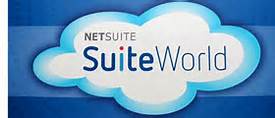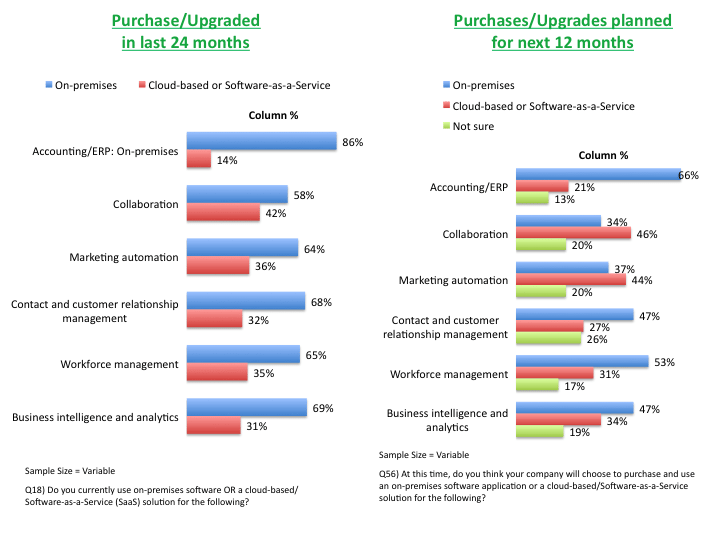 I recently had the opportunity to attend SuiteWorld 2014, NetSuite’s annual user conference—along with about 6,500 attendees including customers, partners, journalists and analysts. The event provided us with a good mixture of history, progress, new announcements, and future directions.
I recently had the opportunity to attend SuiteWorld 2014, NetSuite’s annual user conference—along with about 6,500 attendees including customers, partners, journalists and analysts. The event provided us with a good mixture of history, progress, new announcements, and future directions.
Memory Lane–A Somewhat Bumpy Road to the Cloud
I’ve been following NetSuite as an analyst since 1998, when Evan Goldberg (still serving as NetSuite’s CTO) and Mei Li (now SVP NetSuite Corporate Communications), first came to Summit Strategies, where I worked at the time. Early on, NetSuite was NetLedger, offering a simple accounting solution geared towards small and medium businesses (SMBs). The term “cloud” hadn’t yet been coined to describe the model of delivering software as a service (SaaS). In fact, even the SaaS term hadn’t surfaced. Back in the day, we called them Application Service Providers (ASPs) or just online solution providers.
NetSuite was one of a just a handful of vendors that came to pitch this new software delivery method to us in 1998. Salesforce and Employease (long ago acquired by ADP) and maybe a few now defunct vendors probably rounded out this tiny group. Of course, in the next couple of years, we were flooded with visits from seemingly anyone with a similar ideas that could create a PowerPoint presentation.
Over the past 16 years, many cloud vendors have come and gone, as for the most part, the road to the cloud has turned out to an evolutionary–not revolutionary–journey. Mainstream customer adoption of cloud solutions only started to become a reality in 2008, when the “great recession” hit, and the OPEX cloud model became much more attractive to cash-strapped companies. Looking at NetSuite specifically, I remember that for quite a few years in there, the vendor seemed stuck at a count of 5,000 active customers, and some wondered if it could ramp up to the next level of growth.
Fast Forward
Today, while some roadblocks remain, many companies view the cloud as a mainstream approach to get the solutions they need to run their businesses. In fact, in some areas, such as collaboration and marketing automation, SMB plans for cloud adoption are higher than for on-premise.
Figure 1: Current and Planned Solution Deployment Methods Business Applications
However, financials and ERP—NetSuite’s flagship solutions—have moved more slowly to the cloud than other types of applications. There are many reasons for this, including:
- Deeper existing market penetration of financials, accounting and ERP. Financial and accounting software has been around a lot longer than many other types of software. So especially in the early days of the cloud, NetSuite (and other cloud-based financial/ERP vendors) needed to convince companies to replace incumbent on premise financials and ERP systems with a new cloud solution. In contrast, vendors outside of the core ERP and financial realm were selling solutions to automate functions that many companies had not yet automated—a much easier pitch to make.
- Fewer users. Fewer people within an organization typically use financials and ERP systems than, for instance, CRM or collaboration tools. For many companies, the cloud model becomes more compelling as the number of users increases.
- More regulatory and security requirements. Financial information is subject to many more regulatory concerns than many other functional areas. This, combined with many companies’ reluctance to house the company’s “crown jewels” with a third-party, have slowed the pace of financials and ERP cloud adoption.
Furthermore, the cloud has made it easy for business decision-makers to adopt new apps as needed, without IT involvement or even centralized corporate oversight. NetSuite has always focused on the value of a single, integrated system of record—certainly a longer, higher up the food chain sell than buying other types of solutions.
NetSuite’s Integration Value Proposition Comes of Age
 Despite these challenges, NetSuite has successfully stayed the more challenging course, and more companies are coming around to the value proposition that integrated solutions help remove friction and streamline business processes. For Q1 2014, NetSuite announced a record $123 million in revenue, up 34% year-over-year, and more than 20,000 organizations now use NetSuite to run their businesses.
Despite these challenges, NetSuite has successfully stayed the more challenging course, and more companies are coming around to the value proposition that integrated solutions help remove friction and streamline business processes. For Q1 2014, NetSuite announced a record $123 million in revenue, up 34% year-over-year, and more than 20,000 organizations now use NetSuite to run their businesses.
At SuiteWorld, NetSuite showcased its 2014 Transformer Award winners, including Tableau Software, Jive Software, Shaw Industries, Williams-Sonoma and MusclePharm, to illustrate how NetSuite helps them grow and manage change more effectively. But their stories reflect a broader phenomenon. I’ve personally talked to many customers—and not only from NetSuite’s ranks—about how much better business runs when everyone views and works with the same, real-time information.
NetSuite’s Next Phase
Over the years, NetSuite has added integrated CRM, Ecommerce and other areas to its unified platform. At SuiteWorld 2014, NetSuite not only announced a new, improved user interface, but additional integrated offerings including:
- B2B Customer Center, built on NetSuite’s SuiteCommerce platform, to provide B2B merchants a platform to deliver a seamless, efficient B2C-like online shopping experience, with the ability to view order status, details and history, track shipments, reorder goods, and more.
- A new services resource planning (SRP) solution, that provides integrated ERP, CRM and professional services automation (PSA). The offering includes client management, project and resources management, time-and-expense management, and project accounting in a single solution, designed to enable both product- and project-based businesses to modernize and transform operations the way manufacturing resource planning (MRP) did for manufacturing businesses.
- The TribeHR SuiteApp. After acquiring TribeHR (a social human resources management suite) last year, NetSuite has migrated tight integration with TribeHR to the NetSuite platform. This brings HR capabilities to NetSuite and provides native integration across TribeHR and other NetSuite solution components.
NetSuite has also come to terms with the fact that one company can’t possibly develop ALL the functionality every company will need, or sell and service all of its potential customers. To that end, NetSuite is bringing more partners into its fold to fill in the white space and provide its customers with a richer ecosystem.
For instance, over 100 developer partners had booths and/or conducted sessions at SuiteWorld. The mix included established vendors such as Avalara, DocuSign and Kronos, to newer entrants such as FieldAware and VertexSMB, all of whom have developed integrations with NetSuite.
On the sales channel side, partners ranged from enterprise-focused players, such as CapGemini and Accenture, to smaller ones such as Cloud ERP (which has built its Australia/New Zealand-based business around selling and supporting the full range of NetSuite solutions), and FHL Cloud Solutions, which has developed a successful micro-vertical approach to marketing and selling NetSuite in industries such as wine, medical devices, and furniture wholesale and distribution.
NetSuite also launched the NetSuite BPO Partner Program at SuiteWorld. Through this program, NetSuite and its partners intend to simplify the outsourcing model and help drive costs down and better server smaller customers. Partners who provide Business Process Outsourcing (BPO) or Business Process as a Service (BPaaS) use NetSuite’s unified solution platform to provide services to their clients. Partners get access to SuiteCloud, NetSuite’s development platform to tailor their NetSuite offerings to industries or client-specific needs. Early partners include Capgemini, McGladrey and Accretive Solutions.
Perspective
Integration helps bring order to chaos–and helps companies reap more value from their application investments. But let’s face it, integrating applications after the fact is a difficult, messy and expensive affair, and one that many SMBs struggle to get done.
In today’s social, mobile and multi-channel world, consumers—whether B2B or B2C—have more power, and all vendors face increasing pressure to provide better, faster, and more user-friendly products, services and engagement to attract and retain customers. Having a unified system of record enables companies to have a more knowledgeable view of customer behavior, and to present a more unified face to customers, whether they’re engaging in marketing, sales, billing or service transaction. This means that the appeal and value of taking an integrated approach will only rise—as will NetSuite’s fortunes.


Would love to see detail in the future about what the average selling price is for a typical Netsuite deal.
Netsuite is offering up growth percentages but I don’t see any hard numbers and Netsuite PR was unwilling to provide them.
Hi Wayne,
Don’t know exactly, but NetSuite ASP has been rising, per Zach Nelson from Q1 2014 earnings below.
We added roughly 310 new customers to our installed base and we did it with an average selling price that was more than 90 percent higher than the prior year. While that ASP was somewhat skewed by a couple of very large enterprise deals even removing those from the calculations, resulted in average selling price at was up approximately 50 percent from Q1 2013.